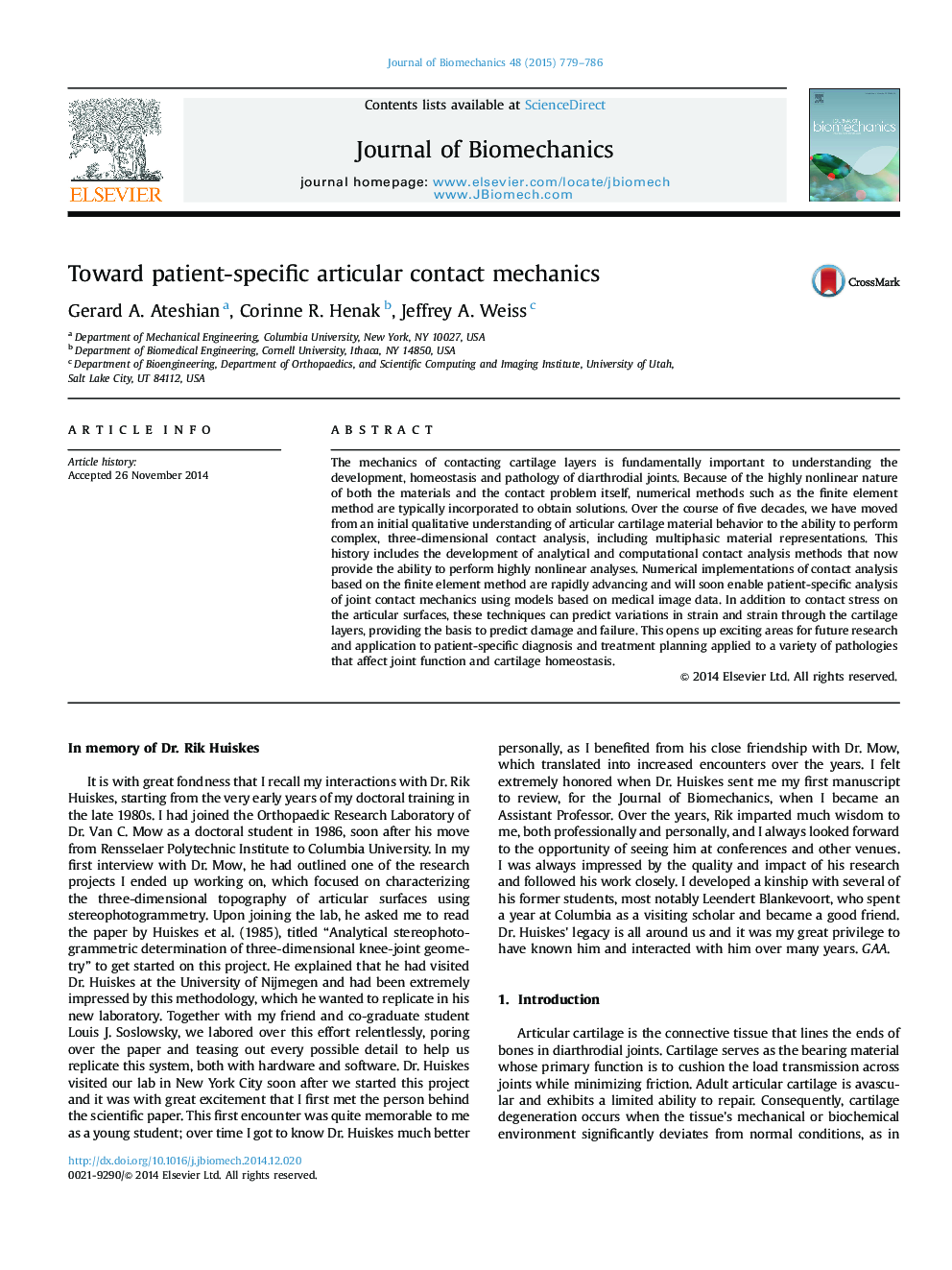| Article ID | Journal | Published Year | Pages | File Type |
|---|---|---|---|---|
| 10431587 | Journal of Biomechanics | 2015 | 8 Pages |
Abstract
The mechanics of contacting cartilage layers is fundamentally important to understanding the development, homeostasis and pathology of diarthrodial joints. Because of the highly nonlinear nature of both the materials and the contact problem itself, numerical methods such as the finite element method are typically incorporated to obtain solutions. Over the course of five decades, we have moved from an initial qualitative understanding of articular cartilage material behavior to the ability to perform complex, three-dimensional contact analysis, including multiphasic material representations. This history includes the development of analytical and computational contact analysis methods that now provide the ability to perform highly nonlinear analyses. Numerical implementations of contact analysis based on the finite element method are rapidly advancing and will soon enable patient-specific analysis of joint contact mechanics using models based on medical image data. In addition to contact stress on the articular surfaces, these techniques can predict variations in strain and strain through the cartilage layers, providing the basis to predict damage and failure. This opens up exciting areas for future research and application to patient-specific diagnosis and treatment planning applied to a variety of pathologies that affect joint function and cartilage homeostasis.
Related Topics
Physical Sciences and Engineering
Engineering
Biomedical Engineering
Authors
Gerard A. Ateshian, Corinne R. Henak, Jeffrey A. Weiss,
